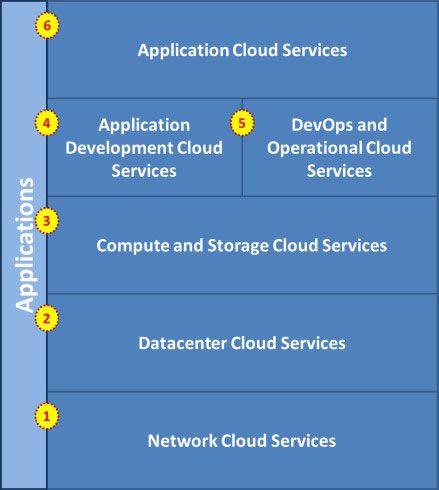 By Zeesham Kazmi
By Zeesham Kazmi
Associate
Chances are not a single day passes where you don't hear of some new advancement in the cloud. Cloud is a topic of strategy discussions in board meetings, and it impacts your family's connectivity at home. Unfortunately, there's still a huge FUD (fear, uncertainty and doubt) factor about cloud computing. In fact, a great deal of immobilizing FUD is portrayed regarding the security, legal and risk functions of the cloud; much of which is based on myths. Many CIOs also have questions about the cloud's costs and potential savings (including the human resources savings factor), as well as how moving to the cloud can impact the transformation of their organization.
The Big Picture
It can be hard to see the trees when you are in the forest, let alone when you're focused on the twigs and leaves, cutting your way through the thorny bushes. Which is why so many people are not seeing the brutal reality: The old way of doing business simply will not exist in 10 years. The cloud transformation is coming whether it's part of your organization's strategic IT planning or not!
What cloud computing is doing for the technology world today is similar to what telephone technology did for global communications in the past two decades, what radio waves did for television, what penicillin did for medicine, and what cars did for transportation.
Which means that although you can make the change over time, if you continue to hold out over the next 10 years your problems will go way beyond simply losing out on the chance to leapfrog your competition. If you continue to hold out, your business will become extinct.
Google and Amazon, for example, are like the new "Wal-Mart." They have perfected the price versus value equation for computing hardware and infrastructure. Their cost is so low that you can't compete with it in-house. Not only can they develop something once and send it out across 1,000 customer instances, they can also manufacture and fine tune their own hardware, plus, their ratio of administrative overhead for the resources required to manage this infrastructure is very low compared to yours. For them it's one resource to thousands of machines, versus one to 300 in a regular company.
In classic SWOT terms, today using the cloud to transform your technology is an opportunity. But if you don't do it, in three years it will become a weakness and in five to seven years it will become a threat. From the cloud computing and business strategy standpoint you can make a 3-year plan or you can make a 10-year plan, but you must make a plan.
The CIO's Role is Changing
Playing in the background of all this is the need for the transformation of the CIO's role. The CIO is becoming more of a Chief Integration Officer than a Chief Information Officer. Rather than being a person who comes up from the technology ranks, the CIO is transforming into someone who can bring the different parts of the company together – someone who understands the requirements and can support the technology initiative whether it's run by a centralized tech team, within sub-functions of the company or outsourced to a third party.
However, as a CIO the more you get tied down with running your own data center, servers and applications, the more time you spend managing engineers to deal with arcane and esoteric procedures, the less you're supporting the company at this higher level.
We all understand the importance and need for top-line growth for the business. We intuitively know that innovation, mobility and rebalancing the budget to more top-line business growth issues are essential adaption and survival strategies that help transform us away from extinction. Moving infrastructure to the cloud as part of your strategic IT planning will allow you to get up to a "30,000 foot level," look at what the business really needs and focus on the business results – without getting bogged down by hardware and software and day-to-day IT maintenance.
Strategic IT Planning: The Problems with the Old Delivery Model
The simple fact is, the cost and complexity of running a company's infrastructure and operations the traditional way – in-house – is too high, and these costs inhibit business growth. Some of the many problems with the old model that you need to consider as part of your strategic IT planning include:
- Massive overhead – Infrastructure and "keeping the lights on" expenses account for approximately 80% of the IT budget.
- Huge maintenance costs – As a very conservative ratio, it is estimated that for both hardware and software, maintenance activities that ensure post-implementation success (such as infrastructure- and application-related security, availability, performance and change) add up to over four times the implementation costs. In most companies this factor is not only much higher, it's growing.
- Increasing complexity – Managing security, availability, performance and change are getting increasingly complex and costly. The "brain trust" to solve these problems in an elegant way is almost non-existent inside most organizations. And the same monolithic methods of management are being applied today as in the last two decades; hence the slow pace and high cost.
- Time constraints – Due to this increasing complexity there is now little to no "premium attention time" left for the CIO or the executive management team to focus on innovation, engaging in growth projects and truly partnering for business development.
The Cloud Opportunity
Whereas cloud networking has been pervasive for over 20 years, cloud computing and storage have become increasingly pervasive over the past 10 years. Mobility, for example, an exponentially growing trend, relies heavily on cloud technology.
In the full cloud model, all of the different aspects of your IT delivery, from network services to application services, are stacked, as in this diagram:

Even if you haven't already considered officially "moving to the cloud," if you use network services with a provider and a datacenter, you're already there. Now the opportunity is to move up the stack step-by-step, therefore gradually taking greater advantage of the cloud and increasing your leverage.
Orchestrating the Solution
I recommend that you take a bottoms-up approach to moving to the cloud. Start by transforming the infrastructure foundation on which all of your applications reside: network, computing and storage. This will put you on track to focus on the top-down activities, by freeing your time to engage in the innovation required to slowly transform the whole technology stack.
- Develop the strategy – Make up your mind and get on track that you will do this, then develop a strategy for how you'll approach the business processes.
- Establish benchmarks – Next, benchmark the things that you want to address. For example, you may want to figure out your baseline costs for computing per server, user, storage and network. Compare these numbers to the cloud and your industry.
- Create time – To make time for this process, take a long and hard look at all of the IT initiatives on your list and start cutting some of them off. Challenge the necessity of all projects and activities, and put any low return activities on a wish list. Examples of these could include high-frequency patching, unneeded upgrades, low-value application features implementation, and repeat problem fixes that can be solved by training.
- Get a partner – There's no need to do all this alone. Partner with an expert and an organization that can the orchestrate baseline costs discovery and strategic assessment, and then work through options for you based on business objectives and constraints.
Conclusion
The world is changing, and your organization needs to change with it. When it comes to cloud computing and business strategy, sooner or later you're going to have to make the move. A trusted partner and firm that specializes in transformational orchestration strategies can be invaluable for this process.
About Zeesham Kazmi
As a seasoned global technology executive, Zeeshan is known as an analytical thinker who introduces cutting-edge solutions and game-changing cultural shifts that ignite revenue and productivity, and optimize performance. Clients benefit from his extensive experience directing the development and execution of advanced IT strategies that facilitate sustainable growth and increase profitability.
A cross-functional motivator, Zeeshan is able to coalesce disparate operations, reverse negative trends and create networks of loyalty. The result: High-functioning teams that consistently exceed expectations.
About CIO Professional Services
CIO Professional Services LLC is a top-rated IT (Information Technology) consulting firm, based in the San Francisco Bay Area, specializing in strategic IT consulting and business / IT alignment. Companies come to us seeking assistance with their information technology strategy as well as to source interim CIO / CTO employees or fractional CIO / CTOs.


